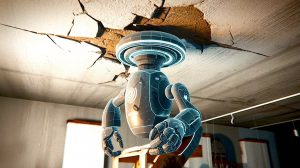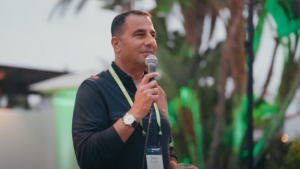3D printing round up: E-Nable offers the world a helping hand, Cincinnati to develop 500 times faster 3D printer
![]() In the world, many people are born with limb loss or deficiency. In recent years, the use of 3D printers in the healthcare industry has become a source of hope for these people. 3D printers and most importantly, ease of use associated with cheap but high-quality materials, can has led to numerous medical innovations of the technology–especially when it comes to prosthetics.
In the world, many people are born with limb loss or deficiency. In recent years, the use of 3D printers in the healthcare industry has become a source of hope for these people. 3D printers and most importantly, ease of use associated with cheap but high-quality materials, can has led to numerous medical innovations of the technology–especially when it comes to prosthetics.
What began as a group of guys who wanted to help a child in need has become enablingthefuture.org—an international platform for designers, engineers, 3D printing lovers, occupational therapists, professors, parents, artists, students and more. It’s all about providing a “helping hand”.
E-NABLE, an online community of 3D printing hobbyists that works to custom design, improve and create affordable prosthetics for those in need. Created by Jon Schull, a researcher at Rochester Institute of Technology, e-NABLE pairs children and adults with missing or deformed fingers, hands or forearms with makers who produce customized 3D printed prostheses that can improve their lives.
A typical prosthetic hand from a company will run you more than $10,000, but materials for a 3D printed hand can cost less than $50. Schull originally created e-NABLE as an interactive online map for connecting 3D printing hobbyists who would volunteer to design, fabricate and fit mechanically enhanced hands for people. He then developed a Google+ community and a Facebook page for makers to collaborate, innovate and improve the open source designs of 3D printed enabling devices.
Today, more than 300 makers, engineers, medical professionals, tinkerers, teachers, students, artists, philanthropists, parents and ideas people from five continents have come together to make a difference. All you need is someone with a 3D printer at home. E-Nable brings the buyer and the seller together.
Two examples are the twelve-year-old Ben and the eight-year-old Shea. Ben was born in February 2002 with a serious abnormality in his left hand. Ben got in contact with a 3D printed mechanical hand. When he realized he was not the only one with this problem. Ben tried to contact the maker of the hand and not much later he had the small 3D printed hand. Shea was also happy with a 3D printed manual by E-Nable.
Richard Van As assembling Robohand for Liam Dippenaar, image see NPR.org, credit: Makerbot.
The community members help each other to improve existing models, and everyone can participate by printing pieces, creating a complete object or simply giving advice to those who want to create their own artificial limbs. According to the e-NABLE website, each design is different and costs vary between $20 and $150.
“Every week we see makers pairing up and working with people who ask for help,” said Schull. “Sometimes members create small parts or whole devices for people, while others are simply guiding individuals as they build one themselves.”
Cincinnati wants to print 3D 500 times faster than today
A partnership between a U.S. national laboratory and now Cincinnati Inc. is expected to create a 3D printer prototype up to 500 times faster than current technologies. The Department of Energy’s Oak Ridge National Laboratory is partnering with Cincinnati Incorporated, a manufacturer of high quality machine tools located in Harrison, Ohio, is developing a large-scale polymer additive manufacturing (3-D printing) system.
The partnership aims to accelerate the commercialization of a new additive manufacturing machine that can print large polymer parts faster and more cheaply than current technologies. The goal of the project is to build a system that is 200 to 500 times faster and capable of printing polymer components 10 times larger than today’s common additive machines. If that’s not enough to get you excited about, they are also looking to print items which are 10 times larger than those printed with machines today.
“The Energy Department and its national labs are forging partnerships with the private sector to strengthen advanced manufacturing, foster innovation, and create clean energy jobs for the growing middle class,” said David Danielson, the Energy Department’s Assistant Secretary for Energy Efficiency and Renewable Energy. “Developing innovative manufacturing technologies in America will help ensure that the manufacturing jobs of tomorrow are created here in the United States, putting people to work and building a clean energy economy.”
The two partners will start by integrating the additive manufacturing technology to laser machine model manufactured by Cincinnati. According to the agreement, the research team then planned to incorporate a cutting tool at high speed, a Pellet feed mechanism and control software in the gantry system, to add new capabilities to the machine. Access to such technology could strengthen domestic manufacturing of highly advanced components for the automotive, aerospace, appliance, robotics and many other industries.
Thumbnail image credit: Jen Owen of Jen Martin Studios, http://www.npr.org/blogs/health/2013/06/18/191279201/3-d-printer-brings-dexterity-to-children-with-no-fingers
A message from John Furrier, co-founder of SiliconANGLE:
Your vote of support is important to us and it helps us keep the content FREE.
One click below supports our mission to provide free, deep, and relevant content.
Join our community on YouTube
Join the community that includes more than 15,000 #CubeAlumni experts, including Amazon.com CEO Andy Jassy, Dell Technologies founder and CEO Michael Dell, Intel CEO Pat Gelsinger, and many more luminaries and experts.
THANK YOU





















